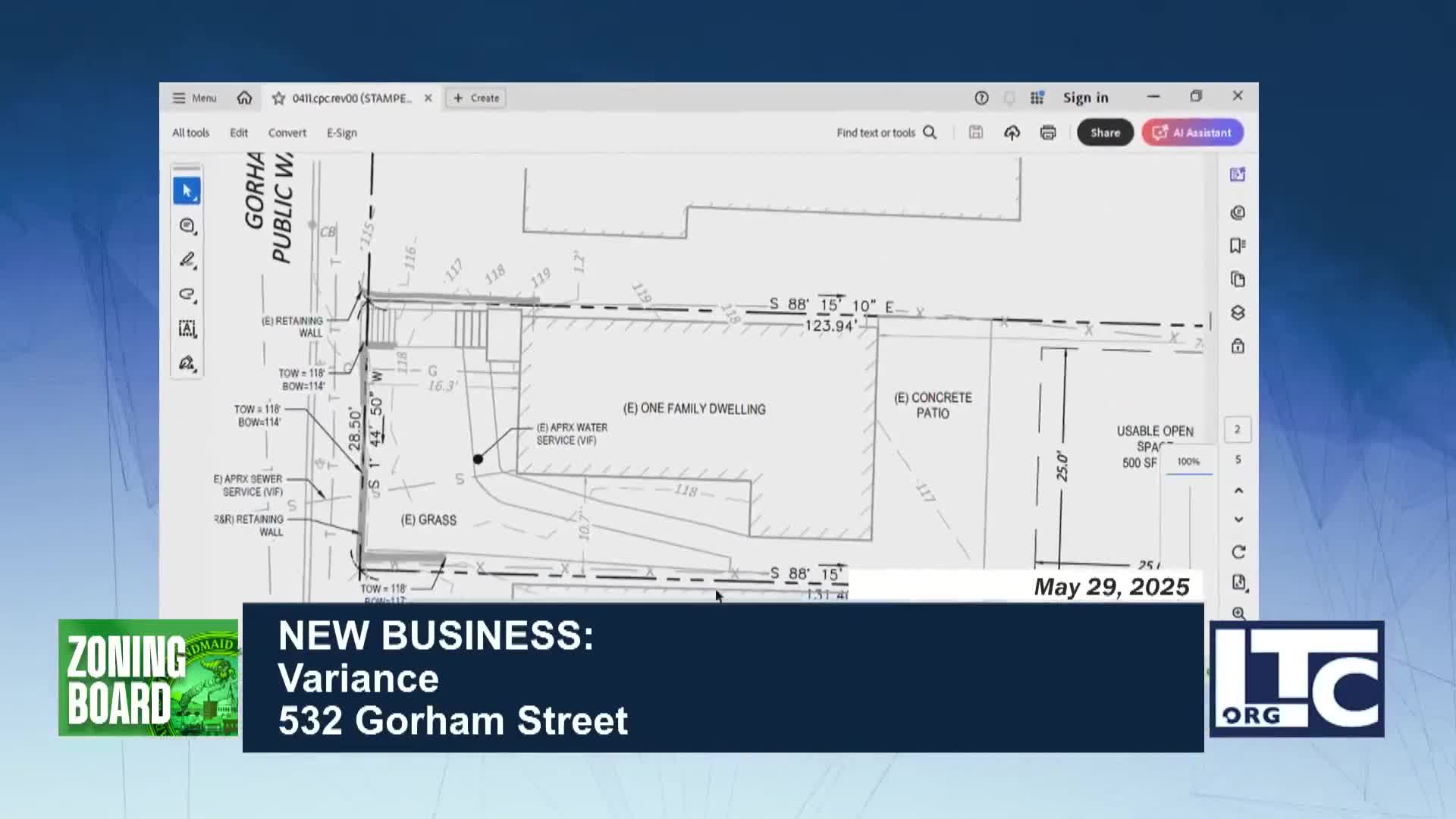Lowell ZBA considers driveway variance amid MassDOT sidewalk upgrades
May 30, 2025 | Lowell City, Middlesex County, Massachusetts
Thanks to Scribe from Workplace AI , all articles about Massachusetts are free for you to enjoy throughout 2025!

This article was created by AI using a video recording of the meeting. It summarizes the key points discussed, but for full details and context, please refer to the video of the full meeting. Link to Full Meeting
As the meeting unfolded, the applicant explained the need for variances from existing zoning laws, specifically requesting relief from setback requirements. The current regulations mandate a three-foot distance from existing buildings, but the applicant proposed placing the driveway directly adjacent to the house. This decision was driven by the lot's limited space, which also necessitated the construction of two retaining walls to manage the elevation changes on the property.
A significant point of discussion arose regarding the existing sidewalk, which features a four-foot drop to the street. The applicant noted that the Massachusetts Department of Transportation (MassDOT) is planning a comprehensive redesign of the Route 3 connector, which includes the sidewalk. This upcoming project raised questions about the necessity of constructing a new sidewalk only to have it removed shortly thereafter. The applicant expressed a desire to coordinate with MassDOT to avoid redundant work, emphasizing a collaborative approach to urban planning.
As the public hearing progressed, board members expressed appreciation for the thoroughness of the proposal. One member, Mr. McCarthy, commended the applicant for the extensive documentation provided, noting that it was unusual to see such detail for a driveway project. He raised concerns about the dimensions of the proposed retaining walls, which would need to fit within the limited space left after accounting for the driveway.
Despite the complexities of the proposal, no members of the public voiced opposition during the hearing. The board closed the public comments and shifted focus to internal discussions, indicating a potential path forward for the applicant's request.
As Lowell continues to evolve, this meeting highlighted the delicate balance between preserving historical integrity and accommodating modern needs. The outcome of this proposal could set a precedent for similar projects in the city, reflecting the ongoing dialogue about urban development and community planning in Lowell.
Converted from Lowell Zoning Board of Appeals- May 29, 2025 meeting on May 30, 2025
Link to Full Meeting
Comments
View full meeting
This article is based on a recent meeting—watch the full video and explore the complete transcript for deeper insights into the discussion.
View full meeting